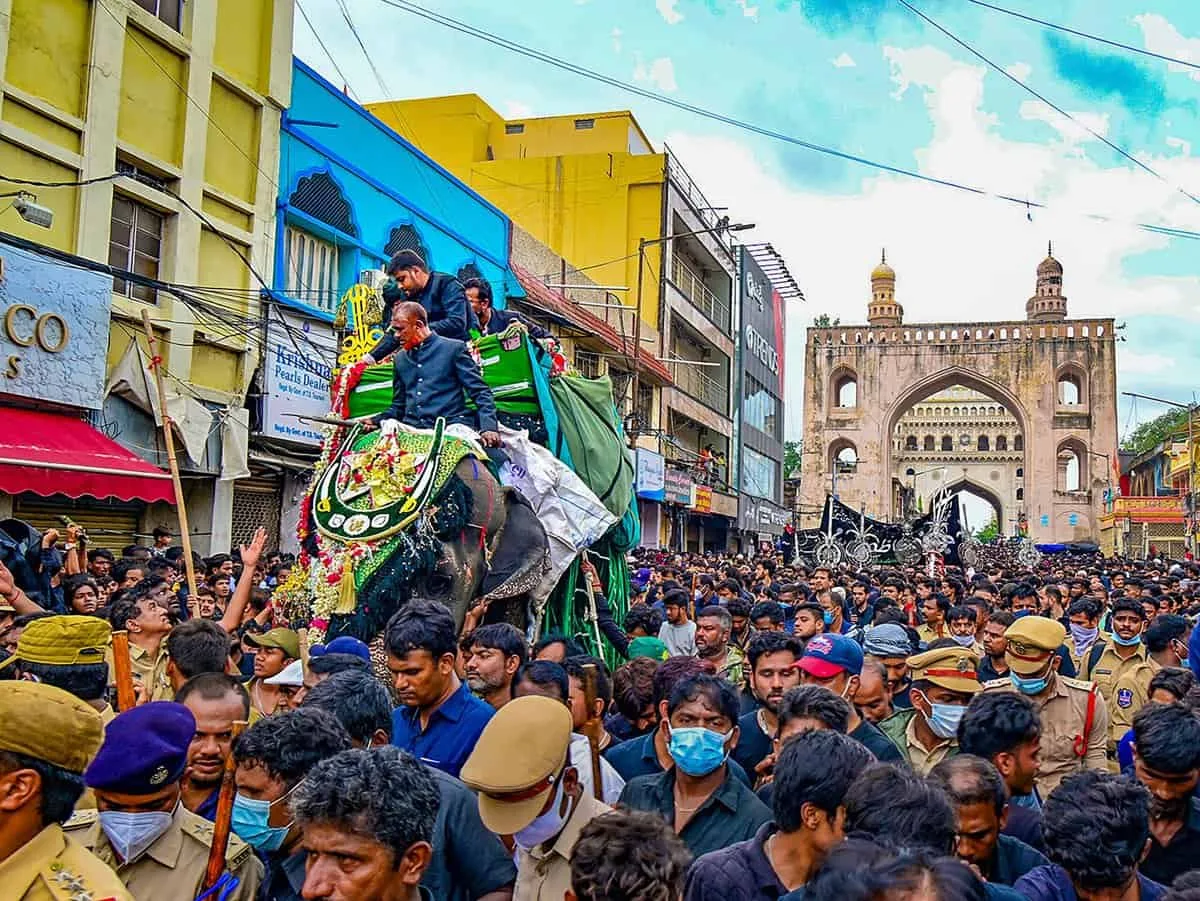Hyderabad: With five days left for Ashura, the 10th day of Muharram, hectic efforts are underway to arrange for an elephant to carry the Bibi ka Alam.
The Bibi ka Alam is taken out from Bibi ka Alawa at Dabeerpura, on Ashura, on a caparisoned elephant. The practice of carrying the Alam on an elephant is in vogue since the Nizam era and continues except during the COVID pandemic.
This year, the organisers of the procession identified and selected an elephant in Delhi for the procession. However, the Telangana Forest Department has denied permission for the elephant ‘Joymoti’ citing animal welfare concerns and transport regulations.
“Keeping the safety and well-being of the elephant in view, permission cannot be granted for transport of the elephant from New Delhi to Hyderabad,” the official letter issued by the forest department to the organisers stated.
For the last week, the organisers have been hopping around different states to arrange for an elephant for the Muharram procession. Till Tuesday evening, there were no positive reports in this regard.
The trial run of the Bibi ka Alam procession is usually held on the 4th or 5th of the month of Muharram. So far, the trial run, considered mandatory, has not been held in the absence of an elephant.
The Hyderabad city police commissioner CV Anand, during the Muharram meeting held recently, had stated that the trial run should be held compulsorily, keeping in view the huge crowd on the 10th of Muharram.
Initially, the alam was carried upon an elephant named Hyderi, and later the job was done by Rajani, its calf. For some years, another elephant, Hashmi, also carried the alam.
However, after the courts did not grant permission for the use of captive elephants for religious procession, the HEH Nizam Trust and local Shia organisations have been bringing elephants from other states to carry the Bibi ka Alam.
PETA offers mechanical elephant
Meanwhile, the People for the Ethical Treatment of Animals (PETA) has written a letter to the organisers asking them to utilise its mechanical elephant.
“With realistic appearance and functions, these mechanical elephants can replicate the experience of a real animal. They can shake their heads, move their ears, swish their tails, and also lift their trunks,” PETA stated in its letter to the organisers.
The history of Bibi ka Alam procession
The practice of installing the Bibi ka Alam dates back to the Qutb Shahi period when Muhammad Qutb Shah’s wife installed an alam in the memory of Bibi Fatima at Golconda. Later, during the Asaf Jahi era, the Alam was moved over to Bibi ka Alawa at Dabeerpura, specially built for the purpose, explained Azmath Jaffery, a social worker and a Shia youth leader.
The alam contains a piece of the wooden plank on which Bibi Fatima was given her final ablution before burial. The relic is believed to have reached Golconda all the way from Karbala in Iraq during the reign of the Golconda king Abdullah Qutub Shah.
“The ‘alam’ has six diamonds and other jewels donated by the builder of Azakhana-e-Madar-e-Deccan, Mir Osman Ali Khan. The jewellery is kept in six black pouches and tied to the standard,” said Hamed Hussain Jaffery, president of Telangana Shia Youth Association.
The Alam is carried on a caparisoned elephant, Ashura. The procession starts around noon from Bibi-ka-Alawa and culminates at Chaderghat in the evening, covering a distance of about 5 km.
According to historians, Mir Osman Ali Khan gave importance to the procession and would walk barefoot behind the Alam, apart from donating precious diamonds and rubies. The donations made are usually referred to as ‘jawaharath’, meaning jewellery.







